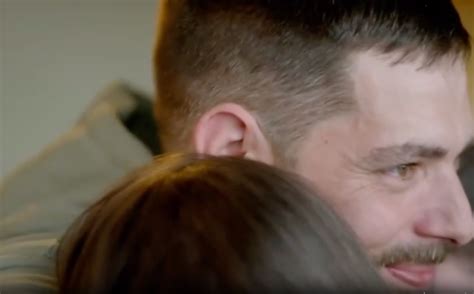
A man abandoned as a newborn in a plastic bag in South Korea 40 years ago has reunited with his biological mother after an emotional search facilitated by DNA testing and international collaboration. The reunion, which took place in South Korea, marks the culmination of decades of yearning and a quest for identity for the man, now residing in the United States, who was discovered as an infant fighting for his life.
The story began in 1984 when the newborn was found discarded in a plastic bag, his life hanging in the balance. He was rescued and subsequently adopted by an American family. Growing up in the United States, he always carried a sense of incompleteness, a void stemming from the unknown circumstances of his birth and the identity of his biological parents. This longing fueled his decision to embark on a journey to uncover his past.
His search gained momentum when he submitted his DNA to a genealogy service. The DNA sample yielded a match – a distant relative living in South Korea. This connection provided a crucial lead, prompting him to contact the Korean police and request their assistance in locating his biological mother.
The Korean police, leveraging their resources and expertise in tracing missing persons, took on the case. They cross-referenced the DNA information with their database of individuals who had registered missing family members. Miraculously, a potential match emerged – a woman who had reported her newborn son missing four decades earlier.
Further DNA testing confirmed the familial relationship. The man’s biological mother had been searching for him, haunted by the circumstances that led to their separation. The reunion was described as deeply emotional, filled with tears, hugs, and a profound sense of closure for both mother and son.
While the details surrounding the abandonment remain unclear, the reunion has brought a measure of peace to both individuals. The man, who has chosen to remain anonymous, expressed immense gratitude to the Korean police, the DNA service, and everyone who played a role in making the reunion possible. His story highlights the power of DNA technology in reuniting families separated by circumstance and time, and underscores the enduring bond between a mother and her child. The case also throws light on the complexities of adoption, identity, and the long-term impact of abandonment on individuals and families.
Expanded Details and Context:
The reunion of the “Plastic Bag Baby” with his biological mother is a poignant reminder of the enduring human desire for connection and belonging. The case underscores several critical themes, including the ethical considerations surrounding abandonment, the complexities of intercountry adoption, and the transformative power of DNA technology in facilitating family reunions.
The Circumstances of Abandonment:
While the specific reasons for the man’s abandonment remain shrouded in mystery, it is essential to understand the broader socio-economic context that may have contributed to such situations in South Korea during the 1980s. During that era, South Korea was undergoing rapid industrialization and urbanization, which led to significant social changes and economic disparities.
Poverty, societal stigma surrounding single motherhood, and limited access to reproductive healthcare services may have driven some women to abandon their newborns. In a society that often placed a high premium on traditional family structures, unwed mothers faced immense social pressure and discrimination. Adoption, particularly intercountry adoption, was sometimes viewed as a solution, albeit a complex and often controversial one.
It is crucial to approach these historical contexts with sensitivity and avoid making generalizations or judgments about individual circumstances. Each case of abandonment is unique, with its own set of contributing factors and emotional complexities. The reunion of the “Plastic Bag Baby” with his mother offers an opportunity to reflect on these issues and promote greater understanding and empathy.
Intercountry Adoption and Identity:
The man’s adoption by an American family highlights the role of intercountry adoption in providing homes for children in need. Intercountry adoption involves the adoption of a child from one country by parents in another country. While it can offer a loving and stable environment for children who might otherwise face uncertain futures, it also raises important questions about identity, cultural heritage, and the potential challenges adoptees may face as they navigate their sense of self.
Adoptees may grapple with questions about their origins, their biological families, and their cultural identity. They may experience feelings of loss, displacement, or confusion as they try to reconcile their adoptive upbringing with their birth heritage. Access to information about their birth history and the opportunity to connect with their biological families can be crucial for adoptees as they navigate their identity journey.
The “Plastic Bag Baby’s” story underscores the importance of providing support and resources to adoptees as they explore their roots. Adoption agencies, support groups, and mental health professionals can play a vital role in helping adoptees process their experiences and build a strong sense of self. The case also highlights the need for ethical and transparent adoption practices that prioritize the best interests of the child and ensure that adoptees have access to information about their origins.
DNA Technology and Family Reunions:
The reunion of the man with his biological mother would not have been possible without the advancements in DNA technology and the increasing accessibility of genealogical services. DNA testing has revolutionized the field of genealogy, allowing individuals to trace their ancestry, identify relatives, and uncover long-lost family connections.
Genealogy services have amassed vast databases of DNA profiles, making it easier for individuals to find matches and connect with relatives they never knew existed. These services have facilitated countless family reunions, bringing together individuals separated by adoption, immigration, or other circumstances.
However, it is important to approach DNA testing with caution and be aware of the potential privacy risks involved. DNA data can reveal sensitive information about an individual’s health, ancestry, and family relationships. It is crucial to choose reputable genealogy services that have strong privacy policies and protect the confidentiality of user data.
The “Plastic Bag Baby’s” story is a testament to the transformative power of DNA technology in reuniting families and providing individuals with answers about their past. It underscores the potential for DNA testing to bring closure and healing to those who have been separated from their loved ones.
The Emotional Impact of the Reunion:
The reunion between the man and his biological mother was undoubtedly a deeply emotional experience for both individuals. After decades of separation and uncertainty, they were finally able to connect and begin to build a relationship.
For the man, the reunion may have brought a sense of completeness and a deeper understanding of his identity. He may have gained insights into his birth history, his family background, and the circumstances that led to his abandonment. The reunion may have also provided him with a sense of belonging and connection to his Korean heritage.
For the biological mother, the reunion may have brought a sense of relief and closure after years of searching and longing. She may have carried guilt and regret about the circumstances of her son’s abandonment. The reunion may have given her the opportunity to express her love and remorse, and to begin to heal from the trauma of separation.
The emotional impact of family reunions can be profound and long-lasting. Reunions can bring joy, healing, and a sense of connection. However, they can also be challenging and emotionally complex. Individuals may need time to adjust to the new relationship and to process the emotions that arise.
Support groups, mental health professionals, and family members can play a vital role in helping individuals navigate the emotional challenges of family reunions. It is important to approach reunions with sensitivity, empathy, and a willingness to understand the experiences of all involved.
Ethical Considerations:
The case of the “Plastic Bag Baby” raises several ethical considerations related to abandonment, adoption, and the use of DNA technology.
Abandonment is a complex issue with profound consequences for both the child and the parent. While it is never justifiable to abandon a child, it is important to understand the circumstances that may lead individuals to make such decisions. Providing support and resources to pregnant women and new mothers can help prevent abandonment and ensure that children have the opportunity to grow up in safe and loving environments.
Adoption is another complex issue with ethical considerations related to the rights of the child, the rights of the biological parents, and the rights of the adoptive parents. It is important to ensure that adoption practices are ethical and transparent, and that they prioritize the best interests of the child. Adoptees should have access to information about their birth history and the opportunity to connect with their biological families, if they so choose.
The use of DNA technology raises ethical considerations related to privacy, data security, and the potential for discrimination. It is important to protect the privacy of individuals’ DNA data and to ensure that it is not used for discriminatory purposes. Individuals should be informed about the potential risks and benefits of DNA testing before they submit their DNA to a genealogy service.
Conclusion:
The story of the “Plastic Bag Baby” and his reunion with his biological mother is a remarkable testament to the enduring power of hope, the transformative potential of DNA technology, and the enduring bond between a mother and her child. It underscores the importance of addressing the root causes of abandonment, supporting adoptees as they navigate their identity journey, and using technology ethically to reunite families. The reunion serves as a poignant reminder of the human desire for connection and belonging, and the importance of creating a society that supports families and protects the rights of all children. It is a story that resonates with many, highlighting the complexities of human relationships and the enduring search for identity and belonging. It sheds light on past societal challenges and calls for continued efforts to improve social welfare and support systems.
Frequently Asked Questions (FAQ):
1. What were the circumstances surrounding the man’s abandonment as a newborn?
- The exact circumstances surrounding the man’s abandonment in 1984 remain unclear. However, historical context suggests that factors such as poverty, social stigma surrounding single motherhood in South Korea at the time, and limited access to reproductive healthcare may have contributed. Specific details regarding the mother’s reasons for abandoning her child have not been publicly disclosed.
2. How was the man able to locate his biological mother after 40 years?
- The man’s search began with submitting his DNA to a genealogy service. This led to a distant relative match in South Korea. He then contacted the Korean police, who cross-referenced his DNA information with their database of missing persons reports. This eventually led to a potential match with a woman who had reported her newborn son missing decades earlier, which was then confirmed by further DNA testing.
3. What role did DNA technology play in facilitating the reunion?
- DNA technology was instrumental in facilitating the reunion. The man’s DNA sample was matched with a distant relative, and then, more crucially, with his biological mother through police database analysis, confirming their familial relationship. Without DNA testing and the extensive databases maintained by genealogy services and law enforcement, the reunion would have been virtually impossible.
4. What were the emotional impacts of the reunion on both the man and his biological mother?
- The reunion was described as deeply emotional. For the man, it likely brought a sense of completeness, a deeper understanding of his identity, and a connection to his Korean heritage. For the biological mother, it likely brought relief, closure, and the opportunity to express remorse and begin healing from the trauma of separation. Both individuals may experience a range of emotions and require time to adjust to their newfound relationship.
5. What are some of the broader ethical considerations raised by this case?
- The case raises ethical considerations related to abandonment, adoption, and the use of DNA technology. Abandonment highlights the need for social support systems to prevent such occurrences. Adoption raises questions about the rights of adoptees to know their origins and connect with their biological families. The use of DNA technology brings up issues of privacy, data security, and the potential for misuse of genetic information. It’s crucial to balance the benefits of these technologies with the need to protect individual rights and privacy.
Additional Points for a Comprehensive Article:
- Legal and Policy Implications: The case might prompt discussions about laws and policies related to adoption, abandoned children, and the rights of adoptees to access information about their biological families. Some countries have stricter regulations than others regarding adoption records and the ability of adoptees to find their biological parents. The reunion could also lead to discussions about the need for better support services for single mothers and families in crisis to prevent abandonment.
- Cultural Context of Adoption in South Korea: Provide more in-depth information on the history of intercountry adoption from South Korea, including the reasons for its prevalence and the social attitudes towards adoption during the relevant time periods. This would help readers understand the broader context in which the man’s abandonment and subsequent adoption occurred.
- The Man’s Life Before the Reunion: Explore the man’s life growing up in the United States. How did his adoption affect his sense of identity? Did he always know he was adopted? What motivated him to search for his biological family? Including personal details about his life would make the story more relatable and emotionally engaging.
- The Biological Mother’s Perspective: If possible, include more details about the biological mother’s experiences after abandoning her son. Did she always regret her decision? Did she actively search for him over the years? Understanding her perspective would provide a more complete picture of the situation.
- The Role of Social Media and Online Communities: Mention the role of social media and online communities in facilitating family reunions. Many adoptees and individuals searching for their biological families use social media platforms and online forums to connect with others and share information. These platforms can be powerful tools for finding long-lost relatives and building supportive communities.
- The Long-Term Impact of Abandonment: Discuss the potential long-term psychological and emotional effects of abandonment on individuals. Abandoned children may experience feelings of insecurity, anxiety, and difficulty forming attachments. Providing information about the potential challenges faced by abandoned children would help readers understand the importance of providing support and resources to these individuals.
- Impact of Korean Police and DNA services. Korean police devoted tremendous efforts to ensure the database matching and facilitated DNA testing process. DNA services, through providing the test results, paved ways for the reunion.
- Expert Opinions: Include insights from adoption experts, psychologists, and legal scholars on the issues raised by the case. Expert opinions would add credibility to the article and provide readers with a deeper understanding of the complexities involved.
- Future Relationship: Discuss the future prospects of the relationship between the man and his biological mother. What are their plans for staying in touch? Will they try to build a close relationship? What challenges might they face as they navigate their new connection?
- Broader Societal Implications: Discuss the broader societal implications of the case. Does it highlight the need for greater awareness of the challenges faced by single mothers? Does it raise questions about the ethical responsibilities of adoption agencies? Does it underscore the importance of providing support to individuals who have been separated from their families?
By incorporating these additional details and perspectives, the rewritten news article can provide a more comprehensive and nuanced understanding of the story of the “Plastic Bag Baby” and his reunion with his biological mother. It would also highlight the broader social, ethical, and legal implications of the case, making it a more informative and engaging read for a wide audience.









